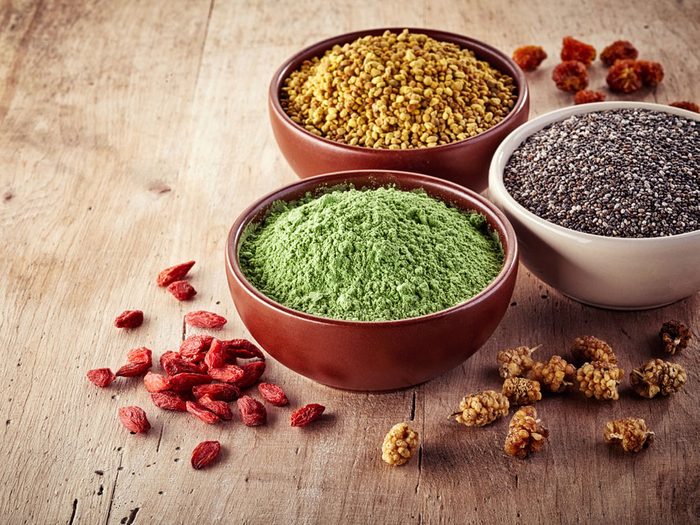
What to eat for plant protein
If you’re a vegetarian, or seldom eat meat, eggs, milk or poultry, your diet may be lacking in protein. Without sufficient amounts, your body may have trouble repairing, and making new cells. The good news is that you don’t have to rely on animal products for your protein needs. Instead, try these foods high in plant protein.
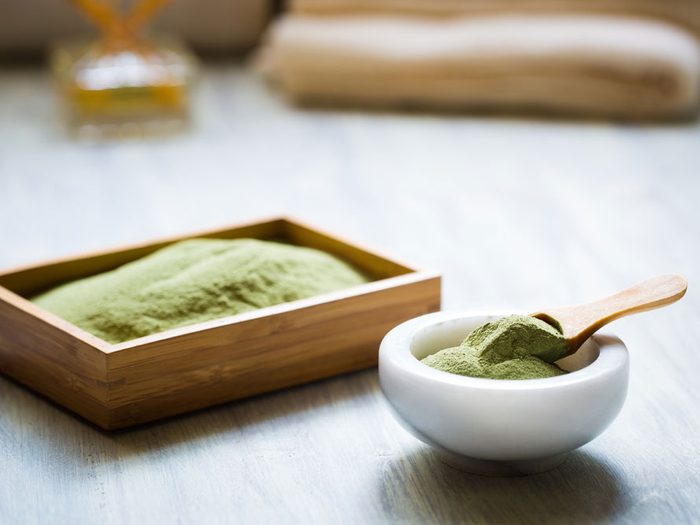
Spirulina
A blue-green algae that grows naturally in salt-water sources, spirulina has a long history dating back to 16th century Aztecs in Mexico. Boasting iron and B-vitamins, spirulina also packs plenty of protein (8g per 2 tablespoons). Compared to beef, which offers 22 percent protein, spirulina is 65-70 percent protein.
Meal ideas: Add to smoothies, or homemade energy bars.
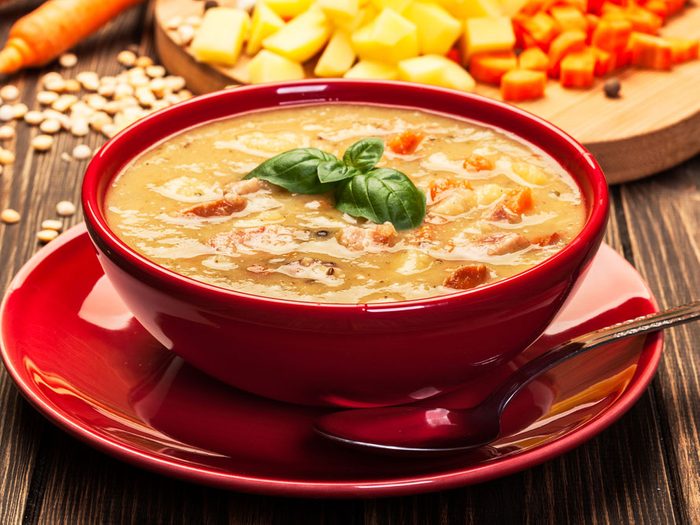
Split peas
Low in fat, and high in fiber, split peas are often confused with lentils, another protein hero. The USDA says split peas (boiled with salt) have a whopping 16g of protein per cup. They’re also full of calcium, and folate.
Meal ideas: Split pea soup, split pea hummus.
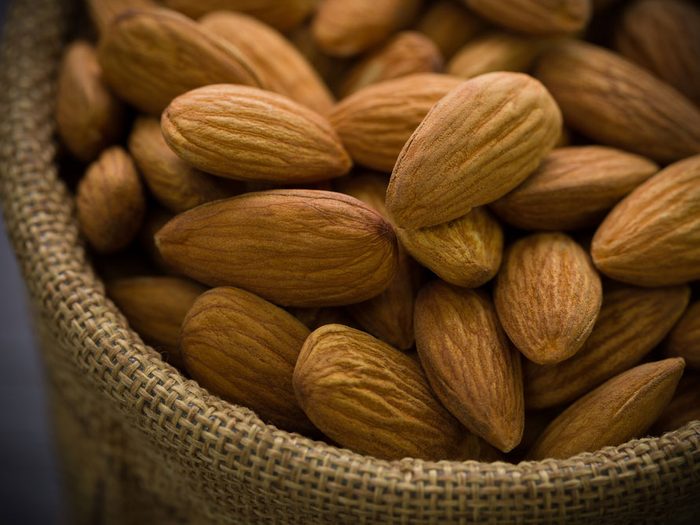
Almonds
Bursting with fiber, magnesium, copper, phytonutrients, and monounsaturated fat, almonds are also a protein-rich snack. A serving of 23 whole almonds has 6g of protein, and can help you feel full for longer. A 2012 study from the University of South Australia found snacking on almonds reduced hunger, and didn’t increase the risk for weight gain. Need more convincing? A 2010 Spanish study reported that people who ate nuts had a decreased risk of coronary heart disease, high cholesterol and blood pressure.
Meal ideas: Sprinkle on salads, and cereal, add to desserts or homemade granola, or eat as a snack on their own.
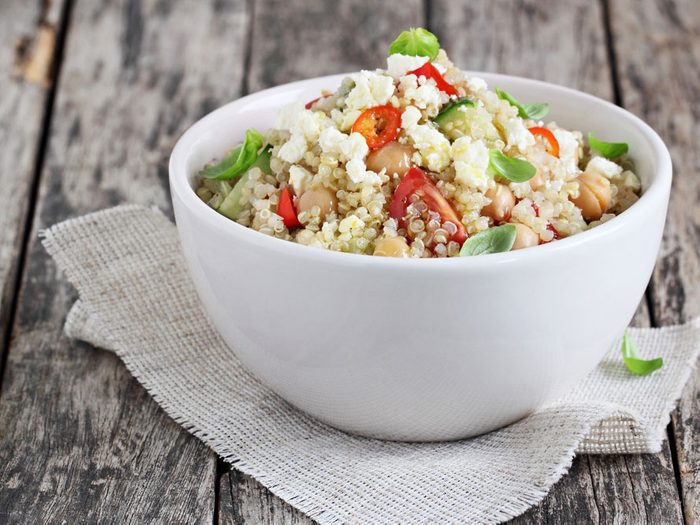
Quinoa
This gluten-free grain is a protein powerhouse. One cup of cooked quinoa serves up 8g of protein according to the United States Department of Agriculture (USDA). It’s also high in calcium, phosphorus, and potassium.
Meal ideas: Swap rice for quinoa in your stir-fry, add it to cooked greens, or to hamburger patties.
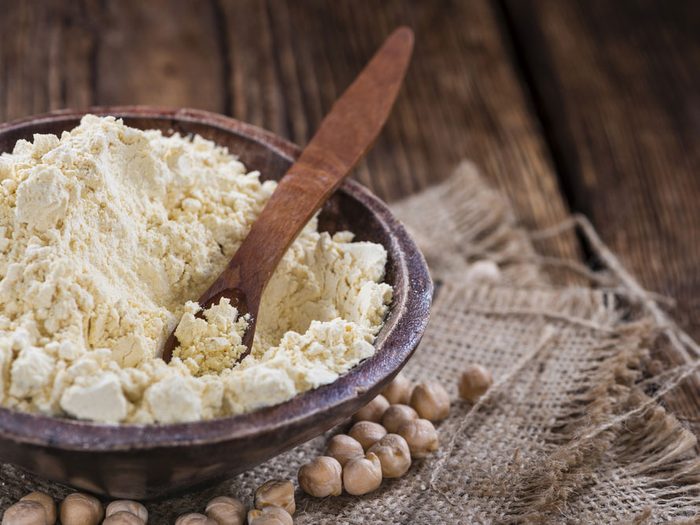
Chickpea flour
Popular in Indian and Pakistani cuisine, chickpea flour is sifting its way into more North American dishes, and for good reason. Gluten-free with a nutty, savoury flavour, chickpea flour is bursting with protein – a single cup has 20g. When shopping for this versatile ingredient, don’t become confused. It’s often marketed as besan, gram, or garbanzo bean flour.
Meal ideas: Use chickpea flour in homemade waffles, cookies, muffins and flatbreads, and to coat vegetables in recipes for onion rings, or pakoras.
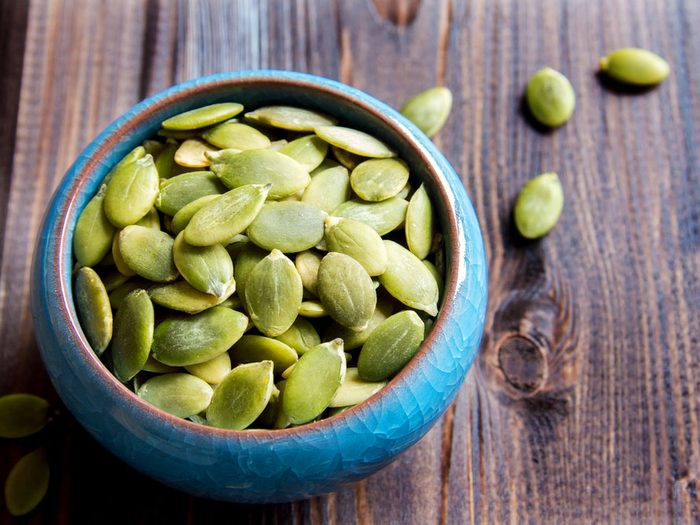
Pumpkin seeds
According to the USDA, one cup of whole roasted pumpkin seeds (without salt) has almost 12g of protein. If you need an on the go protein pick-me-up, pumpkin seeds are a no-brainer. High amounts of vitamin A, potassium, zinc, and magnesium also make this crunchy treat a healthy choice.
Meal ideas: Toss into salads, add to baking, granola, or hot/cold cereal, grind into a flour for baking, or eat solo as a handy snack.
Related:
• How to Eat Vegan: Our 7-Day Meal Plan
• 15 Easy Ways to Eat Better This Year
• 6 Health Benefits of Eating Cauliflower
